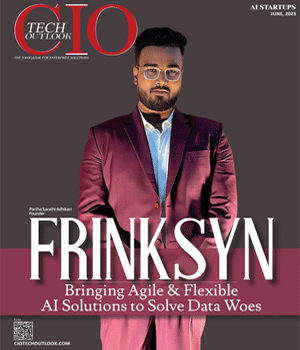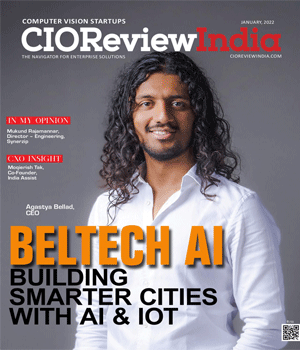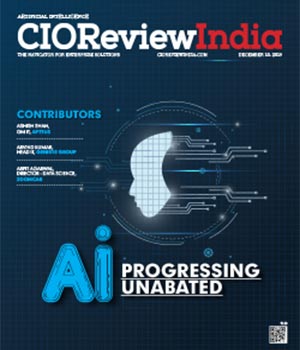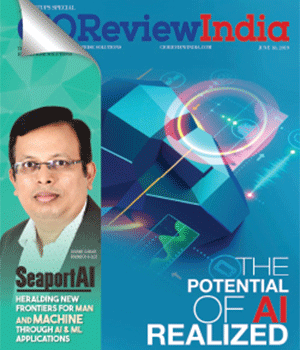
Empowering Data Analytics Through AI Advancements
Vishal Pathak, Content Writer | Tuesday, 16 April 2024, 13:26 IST
 Today's digital world places data at the core of innovation and smart decisions for businesses everywhere. To harness its full potential, companies require cutting-edge tech and methods.
Today's digital world places data at the core of innovation and smart decisions for businesses everywhere. To harness its full potential, companies require cutting-edge tech and methods.
Artificial intelligence (AI), an industry disruptor that's revolutionizing data ana- lysis to new heights of accuracy, speed, and insight is making its mark across various fields and more industries are adopting AI technologies.
With forecasts estimating that the global AI market size will grow by 37.3% annually between 2023-2030, it's evident that it is quickly becoming an essential element in making data analytics more powerful and impactful.
In this blog post, we'll demonstrate how artificial intelligence is revolutionizing decision-making, helping companies make smart and fast decisions while discovering patterns never seen before and anticipating what may occur next.
The Power of Vector Embeddings in Data Analytics
Vector embeddings have revolutionized data analytics, propelling AI advancements to unprecedented heights. Representing data points as multi-dimensional spaces with intricate relationships and semantic meaning, vector embeddings capture relationships between data points efficiently while maintaining contextual nuances and semantic similarities that textual data cannot do themselves. With techniques like Word2Vec and GloVe, textual data can also be converted to dense vectors while still preserving contextual nuances and similarities that would otherwise be lost in translation.
Likewise, in image processing, embeddings encode visual features, enabling machines to comprehend complex visual patterns and structures. Vector embeddings are a revolutionary technology for data analysis, offering more efficient computation and generalizing algorithms across diverse datasets. By employing vector embeddings, data analysts can gain deeper insights, streamline decision-making processes, and drive innovation in various industries. As AI develops further, vector embeddings may open new frontiers of understanding data for impactful insights and decision-making.
Enhanced Predictive Analytics with Machine Learning
Predictive analytics has witnessed substantial advancement thanks to machine learning, a subset of artificial intelligence. Machine learning algorithms can make highly accurate predictions of future trends, behaviors, and outcomes from data analyses in past times. This makes predictive analytics invaluable across various fields such as finance or healthcare, where it may help anticipate market patterns or patient health outcomes.
Due to advances in computing power and algorithms, these models now easily manage large datasets with complex variables, providing organizations with previously inaccessible insights for risk identification and strategic planning activities.
Real-time Analytics for Instant Decision-Making
Real-time analytics leads the charge in data analytics innovation, providing instantaneous decision-making through AI progress. Utilizing advanced technologies like machine learning and predictive modeling, real-time analytics quickly processes vast data streams to extract valuable insights at lightning speed-an indispensable capability in sectors like finance, e-commerce, healthcare and others where split-second decisions are crucial.
Real-time analytics allow organizations to use sophisticated algorithms and scalable infrastructure to monitor key metrics, identify anomalies, and predict trends in real time; providing proactive responses to emerging challenges and opportunities. Not only does real-time analytics boost operational efficiency but it also cultivates agility and competitiveness in today's evolving market landscape; with AI's constant improvements accelerating decision-making processes and driving innovation for further growth and success.
Augmented Analytics: Democratizing Data Insights
Augmented analytics makes advanced data analysis accessible to non-experts through AI and machine learning technologies, giving everyone in an organization access to expert insights without needing the services of data scientists. By automating analysis, augmented analytics enables individuals throughout an entire company to make informed decisions without consulting data scientists for advice.
Augmented analytics encourage a data-driven culture by streamlining and simplifying the analytics process. Because insights become more widely accessible and understandable to all parties involved, departmental collaboration improves.
 Reinforcement Learning for Adaptive Analytics
Reinforcement Learning for Adaptive Analytics
Adaptive analytics is being shaped by reinforcement learning, a kind of machine learning where algorithms learn to make decisions by making mistakes. Reinfor- cement learning models adapt by con- tinuously learning from fresh data in dynamic contexts where conditions change frequently.
This approach is particularly effective in optimizing logistics, managing resources in real time, and personalizing user ex- periences on digital platforms. By constantly refining their strategies based on feedback, these models can achieve optimal outcomes in complex, uncertain scenarios.
Ethical AI and Transparent Analytics
As AI becomes an ever more common part of data analysis, it must be utilized ethically and transparently. This requires creating AI systems that are impartial, accountable, and free of bias as well as setting in place protocols that justify decision-making processes.
By ensuring that data analytics insights are used properly, ethical AI helps businesses build trust with their stakeholders and protects individual privacy. Businesses may fully utilize AI in data analytics while upholding legal and ethical obligations by placing a high priority on these values.
Conclusion
Since AI has entered data analysis, our understanding and ability to interpret it have greatly expanded. Not only have these advances revolutionized data analytics but also business, technology, and society at large. From the complex comprehension supplied by vector embeddings to the predictive capacity of machine learning and the real-time insights provided by AI-driven analytics, these developments are changing various domains. The ability to gain deeper insights, make wise decisions, and anticipate future trends will only increase as we investigate and innovate in these fields, bringing in a new era of efficiency and intelligence.
CIO Viewpoint
Harnessing the Power of AI and ML for Business...
By Vinod Subramanyam, Managing Director, Brillio
The Key to Achieving Real-time AI: Optimizing...
By Mukundha Madhavan, APAC Tech lead, Datastax
Smart Payment Solutions: The Role of AI and IoT...
By Manoj Varma, Head - Payments, Lyra Network, India
CXO Insights
Data Virtualisation: Optimising Access and...
By Puneet Gupta, Vice President and Managing Director, NetApp India/SAARC
Navigating the Ethical Frontier: Transforming...
By Varun Shah, Software Development Manager, Amazon Services LLC
AI and Sustainability Forge the Future of Tech...











.jpg)
.jpg)
.jpg)







